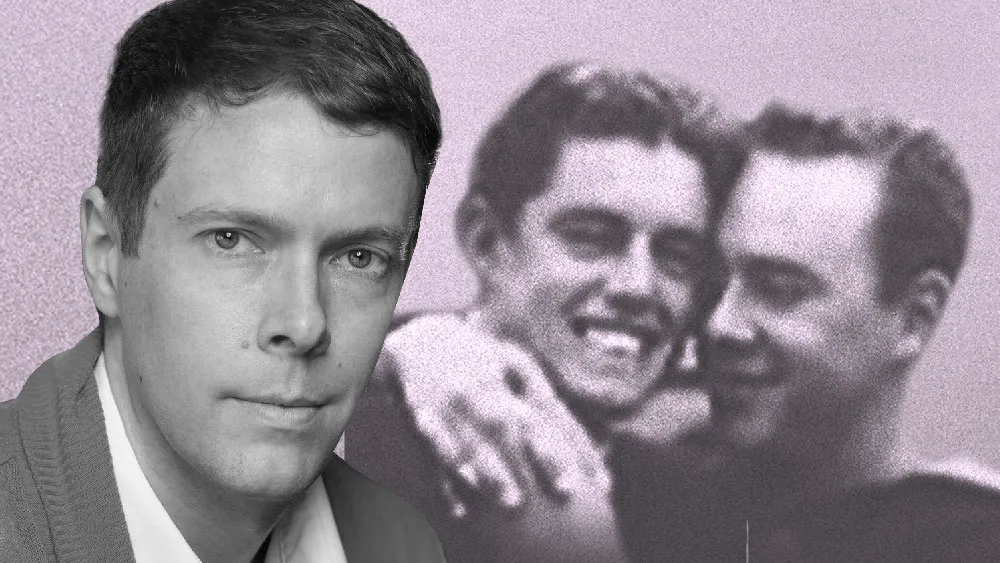August 27, 2009
Lots to see and do in gay-friendly Germany
Robert Nesti READ TIME: 10 MIN.
The times are changing in Europe.
"I used to travel to the states because it was more liberal there," Klaus Puls, 45, a gay Hamburg, Germany resident, told the Bay Area Reporter last month. "But now it's vice versa."
If you visit any of the big cities of Germany, Puls's opinion is clearly evident. It is common to see same-sex couples strolling arm and arm, even outside the gay areas of the cities. Germany's official tourist board hopes to capitalize on that openness and the plethora of gay bars, nightclubs, and hotels in the country. It has a section of its Web site dedicated to gay tourists. And with the recession, it is banking on value-oriented travelers seeing Germany as a bargain compared with most other European countries.
Berlin
Berlin's gay openness brings it back to its roots in the 1920s. At that time, and until 1933 when Hitler took power, gay people from all over the world traveled to the city, which was known for its freedom.
Now, like in the 1920s, Berlin has more gay bars, nightclubs, bookstores, and saunas than London or Paris. With the reunification of East and West Germany 20 years ago, Berlin provides a fascinating history of the end of the Cold War and parts of the city that once were in East Berlin are now among the trendiest parts of Germany and home to a growing younger gay scene.
Gay travel to Berlin got a boost this year when the upscale gay hotel chain, Axel, opened a hotel in the heart of the gay Schoneberg district. It is the third location for the chain after Barcelona and Buenos Aires. Rates start around $90, the lowest room rate in the Axel chain. And keep in mind, prices of just about everything, including hotel rooms, include the tax. Most of Axel's guests are gay men but it is lesbian and hetero-friendly.
Rates at the men-only 20-room Tom's hotel start around $110 but it recently opened a hostel with rates that start around $28. For those who prefer to walk on the wild side, the Art Hotel Connection, just above the Connection bar, has special sale rates that start around $50. If you want a room with a sling or a St. Andrew's cross, you can get it there. The hotel is mostly gay male but they welcome the occasional lesbian and heterosexual guests. Tom's and the Art Hotel Connection, like the Axel, are in the gay Schoneberg area.
There are four areas of Berlin where the most gay bars, nightclubs, and saunas are centered. The aforementioned Schoneberg district has the most gay businesses. Most are geared toward gay men but the long-established Pussy Cat bar is a lesbian institution in Schoneberg. The Mitte and Prenzlauer Berg area, in what was formerly East Berlin, are home to a growing gay scene that caters to a hip, younger crowd. If you want a taste of the old East Berlin, check out the postage-stamp sized Schoppenstube bar just across from the TV tower, the tallest structure in Berlin. The Greifbar is a very popular bar with a dark room. By the way, dark rooms in bars in Berlin are more the norm than the exception. Gay male Berliners love their saunas on the long winter nights. In the Prenzlauer Berg, the Treibhaus Sauna is a popular choice.
The Kreuzberg is home to another cluster of gay clubs, including the popular SchwuZ nightclub.
Just upstairs from the SchwuZ is Berlin's gay museum, the Schwules Museum. It is a must stop for any visitor to Berlin. The two-story museum chronicles the full circle of gay life in Berlin from its roaring gay 1920s to the Holocaust and back to its liberal present.
A number of bus tours will take you efficiently by the top sights in the city. But the best tour in Berlin is free. Berlin Free Tours offers 3 and a half hour walking tours of what was formerly East Berlin that are both fascinating and entertaining. The guides work on tips only so they have to be good.
For up-to-date information on the gay clubs of Berlin, check out the site http://www.out-in-berlin.de. Click on the English section. The site offers free gay maps of Berlin that you can download.
Hamburg
As Germany's second-largest city, Hamburg is less than a two-hour train ride north of Berlin. It is much more compact than Berlin but with a very active gay scene.
The St. Georg's area is the Castro of Hamburg. Like many areas, it was once run down, but in the late 1980s gays came in and completely revitalized it, making it one of the most desirable and expensive places to live in the city. Like Berlin, Hamburg also has a gay mayor and he lives in St. Georg's. The Castro Street of St. Georg, where most of the gay businesses are, is Lange Reihe Street.
There are a number of gay nightclubs, bars, and sex shops in the St. Pauli area along the famous Reeperbahn. The wide boulevard is predominately a heterosexual adult entertainment district with a large red-light section as well as mainstream and gay nightclubs. The Reeperbahn helped give Hamburg its reputation for being Germany's "Sin City."
For a list of the gay nightclubs in Hamburg check out the city's local LGBT publication, Hinnerk at http://www.hinnerk.de. The guide is in German but it is pretty easy to figure out. Their word for bars is the same as ours and lesben, as you might expect, means lesbian. Pick up a free copy of the magazine when you get in town. It includes a gay map.
There are no gay hotels in Hamburg but almost all are gay friendly. The new Superbude Hotel and Hostel is a great choice if you want to stay someplace that is unique, stylistic, and affordable. Rates start at $25 for the hostel and $85 for a room in the hotel. It is a converted industrial building and the rooms are much larger than the small hotel rooms that are the standard in Europe. The rooms have wonderfully quirky colorful designs with the hotel's signature coat hooks that are fashioned from toilet plungers.
Hamburg is a port city on three rivers just east of the North Sea. It has nearly 2,500 bridges and a number of river cruises will take you through the city sights. Half of the city is green and you will never be far from the water. The heart of the gay St. Georg's neighborhood is just two blocks from the beautiful Alster Lake, where you will often find same-sex couples strolling arm and arm.
A fascinating lesson on German history can be found on BallinStadt, an island in Hamburg that is now connected by bridges and the subway. It was the place where 5.2 million immigrants were processed before leaving Europe. Most left during the first part of the 20th century for America. The island is now a modern interactive museum with a recreation of what once were the living quarters for immigrants before they could ship off. The Nazis closed the station in 1934, shutting off an important route of escape for Jews in an increasingly anti-Semitic Europe.
Hamburg is in the process of building what will be its most recognizable landmark. The Hamburg Philharmonic Hall is scheduled to be open by 2011. The waterfront building will look like an old stone fort topped with a giant glass iceberg. City boosters hope it will be as much of a landmark as Sydney's Opera House.
Frankfurt
Frankfurt is the place where most international visitors fly to before flying elsewhere in Germany or to another European country. Frankfurt is unique in Europe for having a skyline full of skyscrapers. It is the banking capital of Germany and the headquarters for the European Central Bank, the equivalent of the Federal Reserve Bank. Nearly a third of the city's population are foreigners and you can literally get a taste of that diversity in one of the city's countless ethnic restaurants.
The gay scene is centered in the general area around Alte Gasse and Schafergasse streets. It includes a wide variety of bars and nightclubs. Frankfurt also has a half-dozen gay saunas. The heart of the gay district, which locals affectionately call the Bermuda Triangle, has a touching memorial for the gay victims of the Nazi reign of terror. It is in Klaus-Mann Square in front of the gay club Lucky's Manhattan, also known as LM-27. The memorial is a statue of an angel holding a broken wing.
For a complete list of gay clubs in Frankfurt check out the site http://www.gab.publigayte.com and click on "guide."
Most visitors to the city are on business, so if you can structure your visit over a weekend, you can get a luxury room on the cheap. The city makes it easier for those visitors to come and go. The city center is just a 15-minute subway ride from the airport. So if you have a long layover there, it's easy to take the train in and get a taste of the city. It may entice you to stay longer.
Like most major cities of Germany, much of Frankfurt's downtown was destroyed by bombing in the Second World War. But Frankfurt has lovingly recreated many of the old landmarks. Ironically, some of the newer recreations look more like the real thing than do the buildings that survived. For example, the city's Emperor's Cathedral is a replica of the old Gothic Church that once stood there. But unlike older cathedrals that were untouched by bombing, the stonework inside and outside the cathedral is bright and not darkened by years of pollution.
The Romerberg medieval town square is another recreation of the way the city looked before WWII. It is like taking a stroll back in time. It is in striking contrast to the modern skyscrapers that tower over downtown.
The best view in town is from the rooftop deck of the Maintower building. It sits in the heart of downtown nearly 1,000 feet high. You can walk around for a genuine bird's eye view of the city. Another great view of the city is from the top of Fleming's Hotel. But the best part is the ride to the top. It is a combination of an elevator, dumb waiter, and conveyor belt. It looks something like an elevator but it has no doors and you never have to wait for it. It is constantly running in a circle from the basement to the top floor. You simply step on the moving platform and it will slowly hoist you through all the hotel's floors. (To see for yourself, check out the writer's multimedia blog; link below).
There are no gay hotels in Frankfurt but like all of Germany's big cities, most are gay-friendly. For a taste of home, check out the boutique hotel, 25 Hours Hotel Frankfurt by Levi's. The hotel is just a couple of blocks from the main train station and is an homage to the jeans that originated in San Francisco. A sign over one of the windows reads Levi's San Francisco.
Don't leave Frankfurt before trying its most famous beverage, apple wine. It tastes a little like Martinelli's sparking cider but not as sweet and with alcohol. And while you are drinking apple wine, you might as well try the frankfurter where it all began.
Just a 20-minute subway ride outside of Frankfurt is a spa lover's nirvana. Bad Homburg is not bad at all. Bad is the German word for bath. It is known as the spa town. It is 200 years old and was a natural setting for a spa town with its 14 springs. The town has two main spas and a few casinos. The Kur Royal is a good example of a way to pamper yourself without breaking the bank. For about $35 you can spend a few hours there in one of its many rooms. It is co-ed, so bring a bathing suit. It is very California. One room lets you lie on sand under a simulated sun, another reflects waves on the ceiling.
For more information, visit Germany's official tourism Web site: http://www.cometogermany.com. Click on the gay and lesbians section.
Ed Walsh's multimedia blog can be found at http://www.gaygermany.blogspot.com.
Next week: Munich, Cologne, and Dusseldorf.
Robert Nesti can be reached at [email protected].







